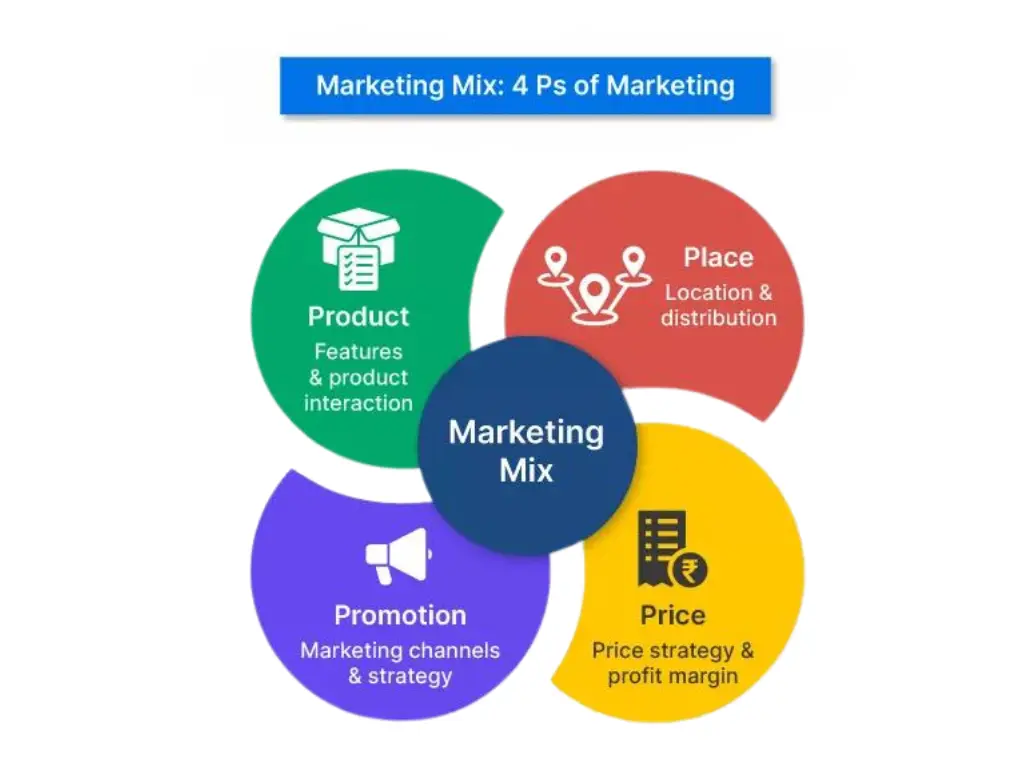

Marketing is one of the most important aspects of any successful business. Marketing is more than just selling a product or service, it is a multi-tasking process that helps investigate consumer needs, create value, and cultivate relationships with consumers. In a competitive business world, marketing is important in developing growth, attracting customers, and maintaining customer loyalty. In this blog, we will share thoughts about common things in marketing, the purpose of marketing, and its effects on business and consumers.

The Evolution of Marketing
In the past century, marketing has gone through significant changes due to advancements in technology, shifts in consumer behavior, and changing global trends. Early 20th-century marketing focused on the product, using mass advertising to reach large audiences. Nowadays, with the emergence of the Internet and digital technologies, marketing is becoming more personalized, data-driven, and customer-centric. Traditional Marketing:
Before the beginning of digital marketing, traditional marketing contained all marketing methods. Traditional marketing refers to any marketing that employs offline media to connect with an audience. Examples of traditional marketing include newspaper and print ads, billboards, mail advertisements, as well as TV and radio commercials.
Digital marketing?
In today's world, digital marketing has transformed how businesses reach their audience. With the rise in the use of the internet, social media, and mobile technologies, digital marketing channels such as search engines, email marketing, and social platforms have enabled companies to connect with their customers in more personalized and interactive ways. Digital marketing offers great targeting possibilities, real-time data analysis, and measurable results, and is one of the strongest tools for businesses in this modern world.
Understanding Marketing:
At its core, marketing is the process of promoting and selling products and services, but it encompasses much more. The American Marketing Association (AMA) defines marketing as:
The activity, set of institutions, and processes for creating, communicating, delivering, and exchanging offerings that have value for customers, clients, partners, and society at large.
This definition illustrates the two crucial components of marketing: value and exchange. In core, companies use marketing to identify consumer needs, create products or services that fulfill those needs, and communicate the value of their offerings to a targeted audience. This ideally results in the exchange of value in the marketplace, benefiting both the business and its customers.
The Purpose of Marketing:
The core purpose of marketing is to connect with customers and fulfill their needs. Marketing enables businesses to achieve several fundamental outcomes, including: Understanding Customer Needs: Marketing starts with understanding customer behavior, preferences, and pain points. Market research helps businesses discover target customers and their priorities.
Creating Value: Once a business understands customer needs, the business can design products or services to eliminate problems or enhance customers' lives. Marketing helps ensure customers understand the value by establishing effective messaging.
Building Relationships: In today's marketplace, marketing is about much more than just a one-time transaction; it is about relationships that last over time. When marketing is SUCCESSFUL, it builds trust and loyal customers between a brand and the customers, which covey repeat purchases and brand advocates.
Driving Business Growth: Ultimately, marketing drives business growth through customer acquisition, retention, and maximizing listing. Marketing is crucial to any growth strategy. One classic way to examine marketing is to consider what is called the 4 Ps of Marketing, or Product, Price, Place, and Promotion. Taken all together, these four elements combine into a cohesive marketing The marketing mix consists of the 4 Ps: Product, Price, Place, and Promotion
The marketing mix consists of the 4 Ps: Product, Price, Place, and Promotion :

1.Product
The product forms a basis on which any marketing campaign is founded. It is what a business offers either as goods or services to the customers. All successful products solve some problem, fulfill a desire, or deliver value in one way or the otherProduct decisions involve considerations such as design, features, quality, and functionality.2. Price
The price of a product or service is the amount that consumers are willing to pay for it. It should be set at a level that is neither too high nor too low, but just right to ensure profitability for the company and provide value to the customer. Pricing can be influenced by competition, demand, and the brand's position in the marketplace.3. Place
Distribution, or "place," involves the methods and locations through which a product is made available to customers. This can include direct sales through physical stores or online platforms, as well as indirect sales through third-party distributors. Place also contains supply chain logistics and inventory management.4. Promotion
Promotion involves various methods to show the value of a product to the target market. These methods include advertising, sales promotions, public relations, and digital marketing campaigns like social media, email marketing, and content marketing. The primary objective of promotion is to increase awareness, generate interest, and ultimately drive sales.The Distinction between Marketing and Sales:
While marketing and sales are closely related, they have distinct objectives. Sales focus on turning potential opportunities into customers. While marketing works to generate demand and nurture relationships with potential competitors. Marketing raises awareness and creates the demand that supports the sales process, and both need to work together for successful business operations.
Understanding Consumer Behavior in Marketing
Understanding consumer behavior is crucial for successful marketing. It contains the factors that influence purchasing decisions, such as socio-cultural, social, personal, and psychological elements. Marketers need to be well-versed in consumer behavior to create effective strategies that cater to consumer interests and demands. Additionally, branding plays a significant role in marketing.
Branding is an essential part of the marketing process as it shapes public opinion of a company. It involves creating a distinct identity to differentiate from competitors, build trust with clients, and communicate core values and mission. Effective branding leads to customer loyalty, repeat purchases, and the growth of brand equity.
Conclusion :
Marketing is a dynamic field that is crucial for any organization's success. It goes beyond just selling products; it involves understanding consumer needs, providing value, and building customer relationships. The traditional 4 Ps of marketing have evolved to include digital opportunities, which are essential for effective consumer communication. Despite its constant evolution, marketing remains a vital tool for competing in a challenging business environment. A strong marketing strategy helps attract consumers, leading to business growth and success in a competitive world. Marketing and marketing strategy are essential for long-term sustainability and viability in an ever-changing landscape.Contact us at contact@lifeboat.co.in for more information.


